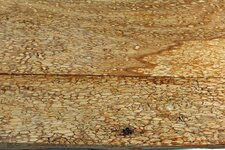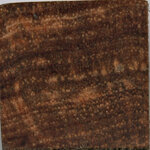Sylvanite
Member
These boards came out of a log found in the woods. I don't recognize the wood and I've never seen figure like it before. It doesn't have a 3-D look, so I wouldn't call it pomelle, or blistered, or quilted. It doesn't match what I've seen called beeswing. It looks more like a honeycomb (almost cellular). The figure appears in both the heartwood and the sapwood, although it is more pronounced in the sapwood. What would you call this type of figure? Any opinons? If anyone can identify the wood, I'd appreciate that too.
The figure shows up in the endgrain as well, so I expect that it will appear all the way around a pen. I'm anxious to turn a piece and find out.
Regards,
Eric
The figure shows up in the endgrain as well, so I expect that it will appear all the way around a pen. I'm anxious to turn a piece and find out.
Regards,
Eric




